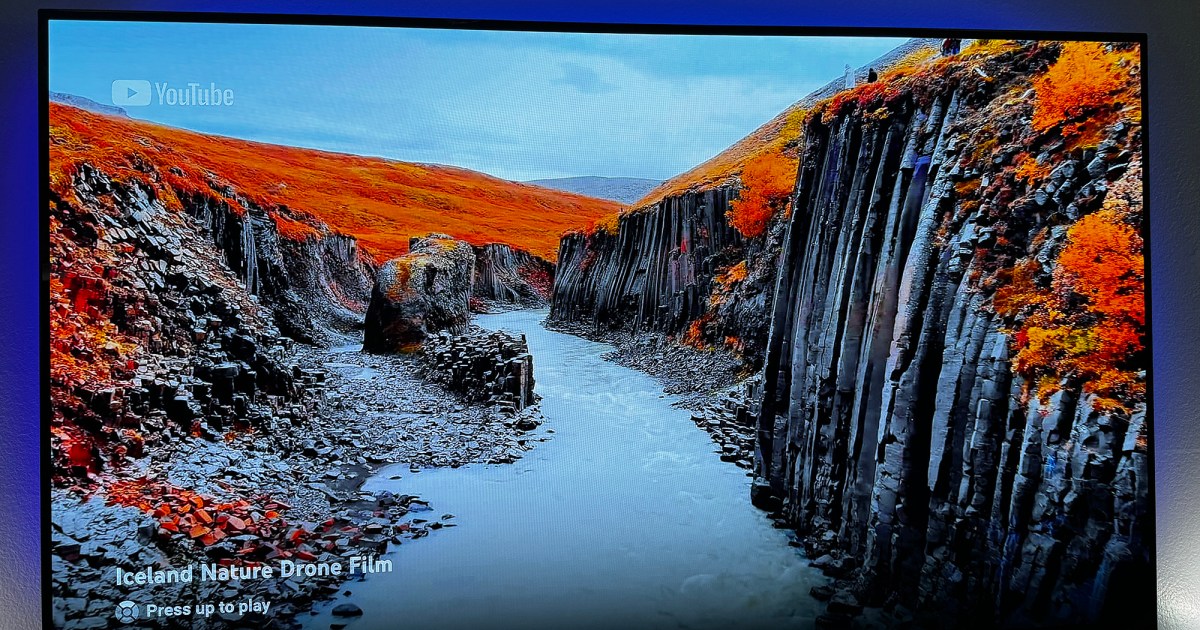Let’s say you happen to be an app developer that develops an app for the world’s biggest online video platform — YouTube. And you’re tasked with developing the app for what we consider to be the best streaming hardware you can buy — Apple TV.
And for the most part, things have been pretty good, even though Apple TV is (obviously) an Apple thing, and YouTube is very much a Google (OK, Alphabet) thing. Sure, there were hiccups in the past, like 4K video being a little wonky. Maybe some HDR issues. That all got worked out, though.
Apparently that meant it was time to poke the bear.
This is a little silly and not at all a huge deal. But, yes, as spotted here, the YouTube app on Apple TV now has its own “screensaver” (those quotes are intentional — stick with me) that kicks in if you sit idle on the app for too long. In other words, if the app is open on your Apple TV and you’re not actually watching a YouTube video, then the YouTube app will give you something to watch. And, ya know, do some basic screen burn-in protection in the process. The horror.
The problem is this: Apple TV has long has an excellent screensaver scheme. So good, in fact, that folks question if the Apple TV screensavers are real. Competitors like Amazon Fire TV and Google TV have caught up and are very good in their own rights — Amazon’s new Ambient Experience is compelling — but Apple TV’s screensavers are in a class of their own. What you see on the YouTube app if it sits idle for 4 minutes and 30 seconds (yes, we checked) is not that. They’re low resolution and not particularly compelling. I’ll go so far as to say they are not good. In fact, they’re pretty bad, visually speaking — probably because they’re not purpose-built as screensavers.
There’s a little bit of text on the screen, telling you what you’re looking at, and inviting you to press up on the remote control to watch a full video of the screensaver. So, really, what you’re seeing is a preview of a video, being shown while nothing else has happened in the app for 270 seconds. And you’re invited to watch the full video. The ones we’ve looked at all had millions of views — take “Acrylic Pouring Techniques” as seen below, for example. That’s the label on the video preview (erm, screensaver). The full video title is “20 Different Acrylic Pouring Techniques – Abstract Fluid Art + Music.” The video — which you can watch here — is a little more than an hour long, was uploaded in 2021, and has more than 11 million views.
But these video previews are not “hijacking” the Apple TV screensaver. At least not in the way the use of that word might convey. They’re just butting in line is all — the app equivalent of a blog commenter digitally yelling “first!” If you were to watch another video, you’d also be “hijacking” the Apple TV screensaver by preventing it from launching.
Is the YouTube app being a little sneaky by firing up its own screensaver 30 seconds before Apple’s would kick in at the default 5-minute mark? Definitely. Deviantly? Maybe. (Probably. Almost certainly.) Once the YouTube screensaver is active, it keeps the Apple TV screensaver from kicking in — because the YouTube screensaver is, ya know, doing things. The “workaround?” Set the Apple TV screensaver to turn on at 2 minutes, ahead of the YouTube screensaver, which doesn’t currently have any settings in the app to change its trigger time.
I love the Apple TV screensavers, and I’ve written more than my share of words about how the various streaming platforms do screensavers. I think they’re a real reason to get an Apple TV 4K. They’re gorgeous. They’re better than all the other options.
This is why there are rules when it comes to developing apps. This is why there are frameworks. This is why there are APIs, which shape how things are done. And this is what happens when there are gaps in those frameworks.
Apple may well close that gap somehow. It may also provide proper developer tools to allow for third-party screensavers on tvOS, though that obviously will lead to a flood of low-quality options, and it’s possible Apple doesn’t want that. (It may well want that revenue share it gets from App Store sales, though.) Right now, the only option is to code a standard Apple TV app and then launch it manually.
Doing that, by the way, will also prevent the Apple TV screensaver from launching. Go figure.
Editors’ Recommendations


